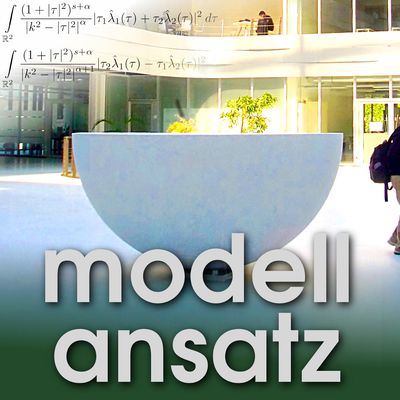On closer inspection, we find science and especially mathematics throughout our everyday lives, from the tap to automatic speed regulation on motorways, in medical technology or on our mobile phone. What the researchers, graduates and academic teachers in Karlsruhe puzzle about, you experience firsthand in our podcast "The modeling approach".
http://modellansatz.de/en
Electric Vehicles on the Grid
Gudrun talks to Zaheer Ahamed about the influence of an increasing number of Electric vehicles (EV) to the electrical grid. Zaheer just finished the ENTECH Master's program. He started it with his first year at the Karlsruhe Institute for Technology (KIT) and continued in Uppsala University for the second year.
Gudrun was part of the grading process of Zaheer's master thesis "Estimating Balancing Capacities of Electric Vehicles on the German and Swedish grids in 2030".
The rising awareness of pollution from transport is leading to innovations within the transport sector. At the moment EVs are the leading technology. With many countries Germany and Sweden joined the so-called EV30@30 campaign, aiming for 30% of new vehicles sales to be electric by 2030. These ambitions alongside an ever increasing capacity of variable renewable energy sources (RES) in our power systems, pose a concerning challenge for Transmission systems operators (TSO) to maintain proper power system operation. Imbalances between supply and demand are undesirable in any electrical power system and with the rising popularity of EVs and RES such events are only expected to continue or increase.
Fortunately, with the recent development of Vehicle to grid (V2G) concepts as well as extensive studies into the load-shifting potential of EVs, EVs presents an interesting solution for power system balancing distributed energy storage system. Zaheer's study showed that EV are capable of balancing the grid for approximately 60% of the time providing 55-60% of the total balancing energy required. However, the operation also took heavy toll on the EV’s battery performance as it could potentially reduce its life to a 1/7th of its original lifetime.
References
- Commission Regulation (EU) 2017/1485 of 2 August 2017 on establishing a guideline on electricity transmission system operation, 2017.
- S. Weitemeyer e.a.: Integration of Renewable Energy Sources in future power systems: The role of storage. Renewable Energy, 75 pp.14-20, 2015.
- D.M.Greenwood e.a.: Frequency response services designed for energy storage. Applied Energy, 203 pp.115-127, 2017.
- Eurostat Database
- J. Schäuble e.a.: Generating electric vehicle load profiles from empirical data of three EV fleets in Southwest Germany. Journal of Cleaner Production, 150 pp.253-266, 2017.
Podcasts
- Volker Quaschning, Tim Pritlove: Energiewende, Forschergeist 053, Stifterverband / Metaebene, 2018.
- V. Auinger, G. Thäter: Optimale Akkuladung, Gespräch im Modellansatz Podcast, Folge 160, Fakultät für Mathematik, Karlsruher Institut für Technologie (KIT), 2018. http://modellansatz.de/optimale-akkuladung
- M. Lösch, S. Ritterbusch: Smart Meter Gateway, Gespräch im Modellansatz Podcast, Folge 135, Fakultät für Mathematik, Karlsruher Institut für Technologie (KIT), 2017. http://modellansatz.de/smart-meter
- M. Maier, G. Thäter: Akkumulatoren, Gespräch im Modellansatz Podcast, Folge 123, Fakultät für Mathematik, Karlsruher Institut für Technologie (KIT), 2017. http://modellansatz.de/akkumulatoren
- D. Schumann, M. Voelter: Elektromobilität, Omega Tau Podcast 163, Makus Völter und Nora Ludewig, 2015.
- J. Dickmann, S. Ritterbusch: Pumpspeicherkraftwerke, Gespräch im Modellansatz Podcast, Folge 5, Fakultät für Mathematik, Karlsruher Institut für Technologie (KIT), 2013.
